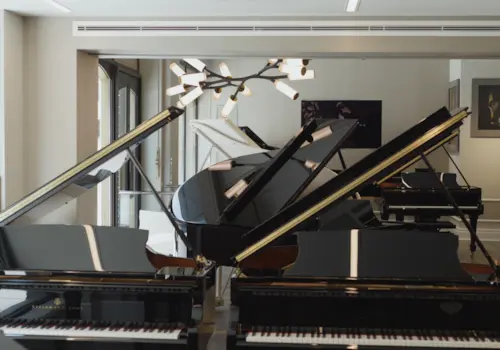Take the time to learn piano repertoire that's at least two or three grades (or levels) below your current standard, says Melanie Spanswick
As a general rule, I’m a fan of piano exams or any type of ‘test’ which encourages a student’s progress. Most teachers are delighted when their student gets to grips with a piece or an aspect of their piano playing enabling them to make impressive strides forward.
But in some cases, one needs to move backwards in order to move forwards. When pianists are repeatedly learning pieces beyond their current level of playing two things can happen: firstly, there is little or no progress at all because finding their way around their current complex piece feels insurmountable which, in the end, can lead to depression and disinterest. And, secondly, students are eventually unable to play from the beginning to the end of a piece of music without errors leading to stumbles and hesitations, which can result in the formation of constant bad habits. How do we alleviate these issues? One way is to explore easier repertoire. Here are 5 tips:
1. Start with repertoire at least two or three grades below your current standard
Find attractive works which fire your imagination and fulfil your own personal piano piece ‘criteria’: make a list of what you want to find in your new piece: do you need a nice tune? A contrapuntal texture? Rich harmonies? A romantic composer who tells a good story (or programmatic music)? The opportunity to use lots of sustain pedal? A ‘Nocturne’ or cantabile-style slow work? Your teacher will guide you to suitable composers and their music, or you can do some online detective work on your own.
2. Try to ensure that your new piece is fairly short in length
Demanding or advanced pieces are often quite long, taking more time to learn and offering more chances to make errors and hesitations, which you are trying to avoid. Aim for three to four pages of music at most.
3. Make sure that your new piece has fairly simplistic texture
Also make sure that the piece not too many thick layers of note patterns, an easily ‘graspable’ pulse and/or rhythmic pattern/s, as well as being within your current ‘hand stretch’ so it will feel comfortable to practice without any physical strain.
4. Once you've found your piece, give yourself a set time to learn it
Implement a proper practice plan so that you can see the improvement at every practice session and you are able to make great strides in a short space of time. Within a week or two, you should be able to play the piece, perhaps at a slower tempo than that suggested, but from beginning to end without the dreaded errors which beset piano playing often taking us a step in the wrong direction.
5. This more straightforward approach to locating repertoire allows you to 'breathe'
Start practising with the knowledge that you are definitely going to be able to master your chosen piece leading to a more successful outcome as well as improving your technical and musical piano skills.
For more advice from Melanie, subscribe to Pianist and read her 'how to play' lesson inside every issue.








